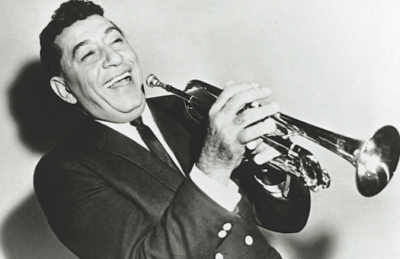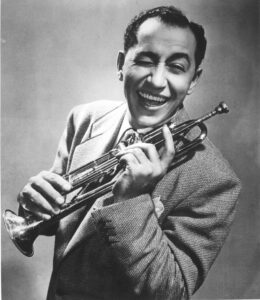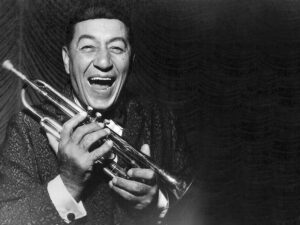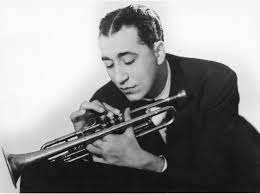Louis Prima was an American musician and bandleader who was active from the 1920s to the 1970s. He was known for his energetic performances and distinctive voice, which combined elements of jazz, swing, rhythm, and blues.
In fact, many consider him to be one of the pioneers of the swing genre, which was popular in the United States during the 1930s and 1940s. However, Prima’s music was also heavily influenced by New Orleans jazz and Dixieland, which gave his music a unique flavor that set him apart from other swing musicians of his time.
So, to answer the question what genre is Louis Prima, his music can be classified as a fusion of swing, jazz, and rhythm and blues with a distinctive New Orleans flavor.
Who is Louis Prima, and why is he significant in music history?
Louis Prima was an American musician and bandleader who was active from the 1920s to the 1970s. He was known for his energetic performances, charismatic personality, and distinctive voice, which combined elements of jazz, swing, and rhythm and blues. Prima was born in New Orleans, Louisiana, in 1910 and began his music career playing trumpet in local jazz bands.
Prima rose to national prominence in the 1930s and 1940s thanks to hits such as “Sing, Sing, Sing” and “Jump, Jive, and Wail.” He and his band, The Witnesses, were known for their lively performances, which often featured Prima’s wife, Keely Smith, as a vocalist. Prima’s music was a fusion of various styles, including swing, jazz, and rhythm and blues, with a distinctive New Orleans flavor.
Prima’s significance in music history lies in his role as a pioneer of the swing genre and his influence on subsequent generations of musicians. He was one of the first musicians to blend swing music with other styles, such as rhythm and blues, and his music helped to popularize the swing genre in the United States.
In addition, Prima’s energetic stage presence and use of humor helped to establish a new model for live performance that would influence many performers in the years to come.
What are the key characteristics of Louis Prima’s music?
Louis Prima’s music is characterized by its high-energy performances, upbeat rhythms, and a unique blend of various musical styles. Prima was known for his distinctive voice, which combined elements of jazz, swing, and rhythm and blues with a touch of his New Orleans roots.
Here are some of the key characteristics of Louis Prima’s music:
- Fusion of musical styles: Prima’s music was a fusion of various styles, including swing, jazz, and rhythm and blues, with a distinctive New Orleans flavor.
- Upbeat rhythms: Prima’s music is characterized by its lively and upbeat rhythms, which often feature driving horn sections and a prominent beat.
- Energetic performances: Prima was known for his high-energy performances, which often included acrobatic dance moves and animated facial expressions.
- Use of humor: Prima’s music was often infused with humor, and his performances were known for their lighthearted and playful nature.
- Collaborations with other musicians: Prima frequently collaborated with other musicians, including his wife Keely Smith and saxophonist Sam Butera, to create a sound that was both unique and influential.
Overall, Louis Prima’s music is characterized by its infectious energy, distinctive sound, and pioneering spirit, which have made him a beloved figure in the history of American music.
What genre is Louis Prima typically associated with?
Louis Prima is typically associated with the swing genre of music. He was one of the pioneers of the swing era, which was popular in the United States during the 1930s and 1940s. Prima’s music was a fusion of various styles, including swing, jazz, and rhythm and blues, with a distinctive New Orleans flavor.
His energetic performances, charismatic personality, and use of humor helped to establish a new model for live performance that would influence many performers in the years to come. Overall, Prima’s contributions to the swing genre and his influence on subsequent generations of musicians have cemented his place in music history as one of the most influential and beloved figures of his time.
How did Louis Prima contribute to the development of his genre?
Louis Prima contributed significantly to the development of the swing genre through his innovative approach to music and performance.
Here are some of the ways in which he contributed to the development of his genre:
- Fusion of musical styles: Prima’s music was a fusion of various styles, including swing, jazz, and rhythm and blues, with a distinctive New Orleans flavor. By combining these different styles, he helped to create a new sound that was both unique and influential.
- Upbeat rhythms: Prima’s music was known for its lively and upbeat rhythms, which helped to define the sound of swing music. His music often featured driving horn sections and a prominent beat that encouraged dancing and movement.
- Energetic performances: Prima was known for his high-energy performances, which often included acrobatic dance moves and animated facial expressions. His lively stage presence helped to create a new model for live performance that would influence many performers in the years to come.
- Use of humor: Prima’s music was often infused with humor, and his performances were known for their lighthearted and playful nature. This use of humor helped to make his music more accessible and appealing to a wider audience.
- Collaborations with other musicians: Prima frequently collaborated with other musicians, including his wife Keely Smith and saxophonist Sam Butera, to create a sound that was both unique and influential. These collaborations helped to expand the boundaries of the swing genre and push it in new and exciting directions.
Overall, Louis Prima’s contributions to the development of the swing genre were significant and far-reaching. His innovative approach to music and performance helped to shape the sound of swing music and influence subsequent generations of musicians.
What were some of Louis Prima’s most popular songs?
Louis Prima had a long and successful career, during which he recorded many popular songs. Here are some of his most well-known and enduring hits:
- “Sing, Sing, Sing” – This iconic song, written by Louis Prima, was first recorded in 1936 and has since become a jazz standard. The song features a driving beat and a memorable trumpet solo by Prima.
- “Jump, Jive, an’ Wail” – Originally recorded in 1956, this song became a hit again in the 1990s thanks to a cover version by Brian Setzer Orchestra. It features Prima’s signature blend of swing and rhythm and blues, with a catchy chorus that encourages dancing.
- “Just a Gigolo / I Ain’t Got Nobody” – This medley of two songs was first recorded by Prima in 1956 and has since become one of his most enduring hits. The song features a lively horn section and Prima’s distinctive vocals.
- “Oh Marie” – This romantic ballad, first recorded in 1954, features Prima’s tender vocals and a lush orchestral arrangement. The song became one of Prima’s biggest hits and remained a fan favorite.
- “Basin Street Blues / When It’s Sleepy Time Down South” – This medley of two jazz standards, recorded in 1956, features Prima’s vocals backed by a swinging horn section. The song showcases Prima’s ability to blend different styles and create a sound that was uniquely his own.
Overall, Louis Prima’s music had a wide appeal and continues to be celebrated today for its energy, humor, and innovation.
What was Louis Prima’s role in the swing era?
Louis Prima played an important role in the swing era of the 1930s and 1940s. He was a versatile musician who combined elements of jazz, swing, rhythm, and blues to create a sound that was uniquely his own.
Here are some ways in which he contributed to the swing era:
- Musical innovation: Prima’s music was characterized by its innovative approach to melody, harmony, and rhythm. He experimented with different musical styles and combined them in new and exciting ways, which helped to expand the boundaries of swing music.
- Popular appeal: Prima’s music was widely popular during the swing era and helped to make swing music more accessible to a wider audience. His catchy tunes, lively rhythms, and energetic performances appealed to both young and old listeners.
- Collaborations with other musicians: Prima frequently collaborated with other musicians during the swing era, including the popular bandleader Benny Goodman. These collaborations helped to create a sound that was both innovative and commercially successful.
- Integration of humor: Prima was known for his sense of humor and often incorporated comedic elements into his music and performances. This helped to make his music more entertaining and accessible to audiences.
- Influence on other musicians: Prima’s innovative approach to swing music influenced many other musicians who came after him. His use of rhythm and blues, in particular, helped to pave the way for the development of rock and roll in the 1950s.
Overall, Louis Prima was a key figure in the swing era of the 1930s and 1940s. His musical innovations, popular appeal, collaborations with other musicians, use of humor, and influence on other artists helped to shape the direction of swing music and its legacy in the years to come.
What were some of the musical influences that shaped Louis Prima’s sound?
Louis Prima’s music was influenced by a variety of musical styles and genres. Here are some of the key influences that shaped his sound:
- Jazz: Prima was deeply influenced by jazz music, particularly the sounds of New Orleans jazz. He was also a fan of big-band jazz and incorporated elements of this style into his music.
- Swing: As a performer in the swing era, Prima was heavily influenced by the swing music of the 1930s and 1940s. He incorporated swing rhythms and melodies into his music, creating a unique blend of jazz and swing.
- Rhythm and blues: Prima was also influenced by the emerging sound of rhythm and blues, particularly the music of African American artists such as Louis Jordan and Cab Calloway. He incorporated elements of this style into his music, creating a sound that was ahead of its time.
- Italian music: Prima’s Italian heritage also had a significant influence on his music. He incorporated Italian melodies and rhythms into his music, particularly in his later recordings.
- Latin music: Prima was also influenced by Latin music, particularly the sounds of Latin jazz and Afro-Cuban rhythms. He incorporated these elements into his music, creating a sound that was both innovative and unique.
How did Louis Prima’s music evolve over time?
Louis Prima was a versatile musician who enjoyed a long and successful career spanning several decades. His music evolved and changed over time as he experimented with different styles and genres.
In the 1920s and 1930s, Louis Prima was primarily known as a jazz musician, playing with a number of big bands and jazz ensembles. He was a talented trumpeter and clarinetist, and his music during this time was heavily influenced by the jazz greats of the era, such as Louis Armstrong and Duke Ellington.
Also, in the 1940s, Louis Prima began to incorporate more swing and jump blues elements into his music. He formed a new band called the Witnesses, which featured a more upbeat and energetic sound than his previous jazz ensembles. During this time, he also began to experiment with incorporating elements of Latin music into his songs.
In the 1950s, Louis Prima’s music took on a more pop-oriented sound, with a focus on catchy melodies and upbeat rhythms. He recorded a number of hits during this time, including “Jump, Jive an’ Wail” and “Just a Gigolo/I Ain’t Got Nobody,” which became some of his most famous songs.
In the 1960s and 1970s, Louis Prima continued to perform and record music, but his popularity began to wane as rock and roll became the dominant musical style of the era. Nevertheless, he continued to tour and record music until his death in 1978.
Overall, Louis Prima’s music evolved from traditional jazz in the 1920s and 1930s to swing and jump blues in the 1940s, to a pop-oriented sound in the 1950s, and then a blend of jazz and pop in the 1960s and 1970s.
He was a talented and innovative musician who was never afraid to experiment with new sounds and styles, and his music continues to be enjoyed by audiences around the world.
What instruments were commonly used in Louis Prima’s music?
Louis Prima, a prominent American jazz and swing musician, used a variety of instruments in his music. Some of the most commonly used instruments in his music include:
- Trumpet – Prima was known for his trumpet playing and used it extensively in his music.
- Saxophone – Prima often had saxophonists in his band who played both the alto and tenor saxophones.
- Trombone – The trombone was also a commonly used instrument in Prima’s music, providing a rich and full sound to his arrangements.
- Piano – Prima played the piano himself, and it was often featured prominently in his recordings.
- Bass – The bass provided the foundational rhythm and harmony in Prima’s music.
- Drums – Prima’s music was known for its upbeat tempo and driving rhythm, which was largely due to the presence of a drummer in his band.
- Guitar – The guitar was used to provide both rhythm and melody in Prima’s music.
- Clarinet – The clarinet was also occasionally used in Prima’s music, providing a contrasting sound to the trumpet and saxophone.
Overall, Prima’s music was characterized by its energetic and upbeat sound, and the instruments used in his arrangements helped to create this lively atmosphere.
How did Louis Prima’s music resonate with audiences during his time?
Louis Prima’s music was very popular during his time, particularly in the 1930s and 1940s. His music had a lively and upbeat sound, which was very appealing to audiences who were looking for an escape from the hardships of the Great Depression and World War II.
Prima’s music blended elements of jazz, swing, and Dixieland, and his performances were known for their high energy and infectious enthusiasm. His band, which included many talented musicians, was also a big draw for audiences.
Prima’s music also had a broad appeal, as it was enjoyed by both young and old listeners. His catchy tunes and memorable lyrics made his music easy to sing along to, and many of his songs became popular hits. In fact, Prima had several number-one hits during his career, including “Jump, Jive, an’ Wail” and “That Old Black Magic.”
Overall, Louis Prima’s music resonated with audiences during his time because it provided a lively and energetic escape from the challenges of the day. His music was infectious, upbeat, and fun, and it continues to be enjoyed by listeners today.
Recommended:
- Airpod case not charging
- How to clean AirPods case
- How To Test Speaker Polarity
- What does the optical cable do?
What impact did Louis Prima have on music after his death?
Louis Prima had a significant impact on music during his lifetime, particularly in the genres of swing, jazz, and big band music. After his death, his legacy continued to influence musicians across various genres and generations.
One of the most notable impacts of Louis Prima on music after his death was his contribution to the development of rock and roll. Prima’s high-energy performances and upbeat, danceable rhythms were embraced by the emerging rock and roll movement, and many artists cited him as an influence.
Also, Prima’s hit songs, such as “Jump, Jive an’ Wail” and “Just a Gigolo/I Ain’t Got Nobody,” have been covered and sampled by countless rock, pop, and hip-hop artists over the years. Prima’s style and persona also influenced the development of the Las Vegas lounge scene.
In addition, his blend of humor, showmanship and musical talent set the standard for performers in the city’s lounges and nightclubs. Many performers, including Frank Sinatra and Dean Martin, drew inspiration from Prima’s approach to entertainment.
Overall, Louis Prima’s impact on music after his death has been far-reaching and enduring. His music and style continue to inspire and influence musicians across genres and generations, and his legacy as a performer and innovator remains a vital part of the history of American music.
Conclusion
If you want to know what genre is louis prima, then we have all you need to know on this page. Louis Prima was a versatile musician who performed in various genres throughout his career, including swing, jazz, and big band music.
However, he is most commonly associated with the swing and jazz genres due to his high-energy performances and distinctive sound. Prima’s style was characterized by his lively vocals, upbeat rhythms, and incorporation of humor and showmanship into his performances.
His influence on music, particularly in the development of rock and roll and the Las Vegas lounge scene, has made him a beloved and enduring figure in American music history.




